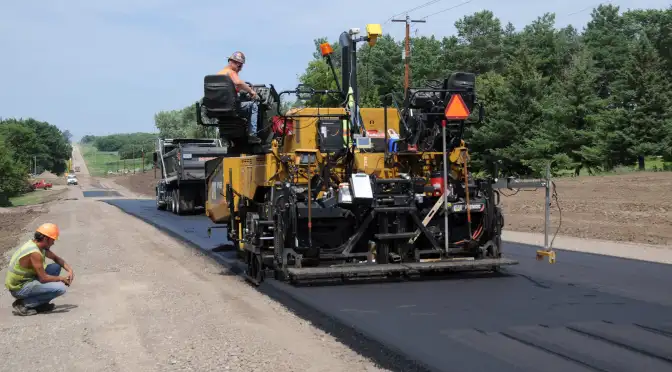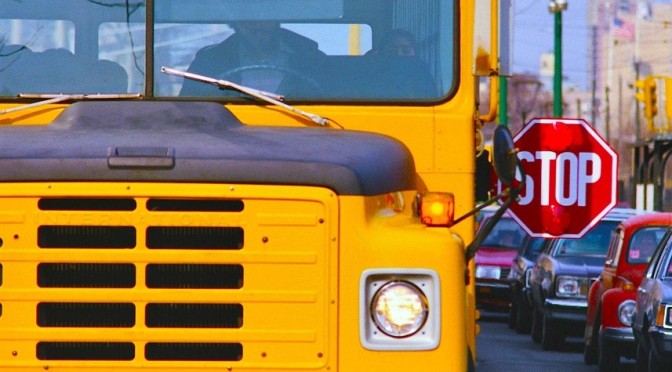Local agencies in Minnesota use cold recycling technologies for flexible pavement rehabilitation because of their economic and environmental benefits. The three main methods are cold in-place recycling (CIR), cold central plant recycling (CCPR), and stabilized full-depth reclamation (SFDR).
Continue reading New Project: Improving and Developing Pavement Design Inputs and Performance Functions for Cold Recycled Pavement LayersAll posts by Julie Swiler
New Project: Development of a System to Report School Bus Stop Arm Violations
When a motorist ignores an extended school bus stop arm, it creates a direct and serious risk to children boarding and exiting a school bus. Capturing information about such incidents is a critical step in better understanding why they occur and how they can be prevented.
Continue reading New Project: Development of a System to Report School Bus Stop Arm ViolationsNew Project: Evaluation of Static and Dynamic No Right Turn on Red Signs at Traffic Signals
Making signalized intersections safer for pedestrians can be achieved by reducing points of conflict between pedestrians and vehicles. One source of conflict occurs when a vehicle makes a right turn on red (RTOR) onto a street in which pedestrians are crossing. During this turn, the driver must cross the path of pedestrians while at the same time searching for gaps in conflicting vehicle flow.
Continue reading New Project: Evaluation of Static and Dynamic No Right Turn on Red Signs at Traffic SignalsGot a Great Idea? We’ve Got Funding to Help
Do you have an idea for a new tool or design that would improve the way you do your job or make it safer? Maybe you’ve discovered a way to improve a standard practice that could make a big difference at your agency. If budget is a barrier, OPERA can help.
Continue reading Got a Great Idea? We’ve Got Funding to HelpNew Project: Assessing Methods to Mitigate Cognitive and Physical Declines That Influence Driving Performance of Older Drivers
Supporting older drivers to safely age in place as they experience age-related declines is important as many Minnesota drivers are reaching retirement age. Minnesotans, 65 years and older, are expected to represent 20% of the state population by 2025, with an overall increase of 122% from 2010-2040. While older drivers are generally safe drivers, those aged 75-85 face the highest risks from injury.
Continue reading New Project: Assessing Methods to Mitigate Cognitive and Physical Declines That Influence Driving Performance of Older DriversNew Project: Mitigating Tenting of Transverse Cracks and Joints in Asphalt Pavement
More than 60% of Minnesota’s roadways consists of asphalt pavement. When transverse cracks occur in asphalt, our frigid winters can cause a secondary distress known as pavement tenting, crack heaving, or lipping. As ice accumulates in the base materials underneath, it causes pavement on both sides of the transverse cracks and joints to heave.
Continue reading New Project: Mitigating Tenting of Transverse Cracks and Joints in Asphalt PavementNew Project: Using Apps to Notify the Public of Local Road and Bridge Closures
The traveling public increasingly relies on navigation systems to get to their destinations. Currently, there is not a system, tool, or process being used by cities and counties in Minnesota to report road or bridge closures for use by transportation agencies to display to the traveling public or for use by third-party mapping/navigation companies (e.g., Waze, TomTom, HERE Technologies, Google Maps) to provide to the public.
This project will document up to three best practices for manual local road closure reporting, describe an approach that the Local Road Research Board could use to develop or implement an existing user-friendly road closure reporting system, and provide guidance on how to report closures to third-party mapping/navigation companies.
Objectives
MnDOT already operates and maintains a statewide traveler information reporting system known as CARS. This project will review and summarize the options and approach for adapting it for local road entry. As part of the study, researchers will:
- Develop best practices for reporting systems by documenting four examples used in other states for establishing and operating tools to report local road closures.
- Define three options for how to make a user-friendly system for local Minnesota agencies using the outcomes of the best practices summary.
- Prepare users guide for entering information into existing mapping tools that will assist in understanding the process to submit road closures and mapping updates to established mapping/navigation providers.
Project Details
- Estimated Start Date: 12/19/2022
- Estimated Completion Date: 03/31/2024
- Funding: Local Road Research Board
- Principal Investigator: Dean Deeter
- Technical Liaison: Perry Clark
Details of the research study work plan and timeline are subject to change.
To receive email updates about this project, visit the Local Road Research Board to subscribe.
New Project: Evaluation of Gravel Stabilizer Used on Gravel Roads and Shoulders
Approximately 50% of roads in Minnesota are gravel. The performance and long-term sustainability of such roads depend on the quality of the surface layer. Unbound large particles can form an unstable road surface that becomes rough, developing potholes and corrugations as this material is scattered by vehicles or washed away by rain. As a result, more frequent maintenance and reconstruction is required, which becomes very expensive for Minnesota counties.
Continue reading New Project: Evaluation of Gravel Stabilizer Used on Gravel Roads and ShouldersMnDOT Library is Among State Government Libraries Recognized by Gov. Walz
Gov. Tim Walz proclaimed April 23-29 Capitol Area Library Consortium Week to recognize CALCO libraries during National Library Week.
Continue reading MnDOT Library is Among State Government Libraries Recognized by Gov. WalzMnDOT Library launches digital library
The MnDOT Library recently got a request for a copy of Minnesota Standard Specifications for Highway Construction from 1938. It might seem obscure, but the request was easy to fulfill because a digitized version of the manual was readily available in the newly launched MnDOT Digital Library.
Continue reading MnDOT Library launches digital library









